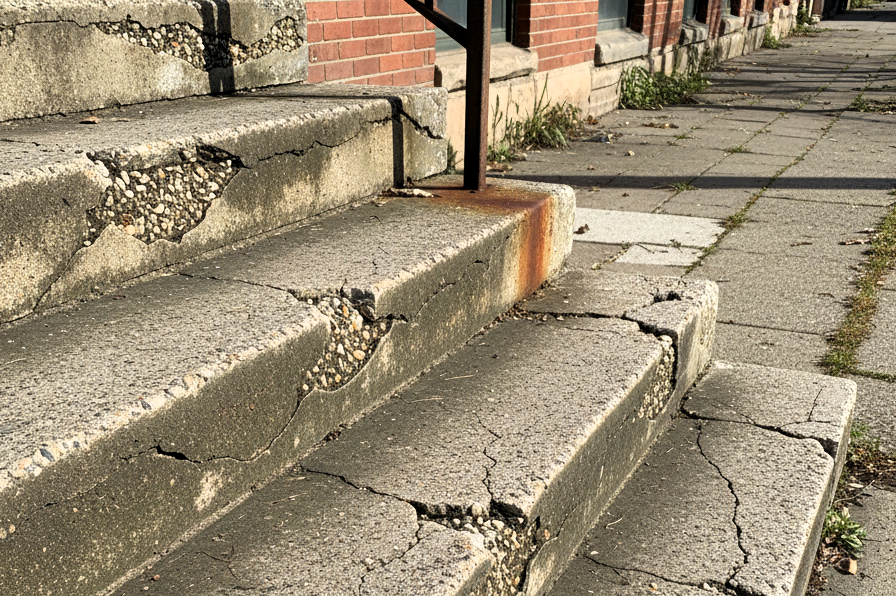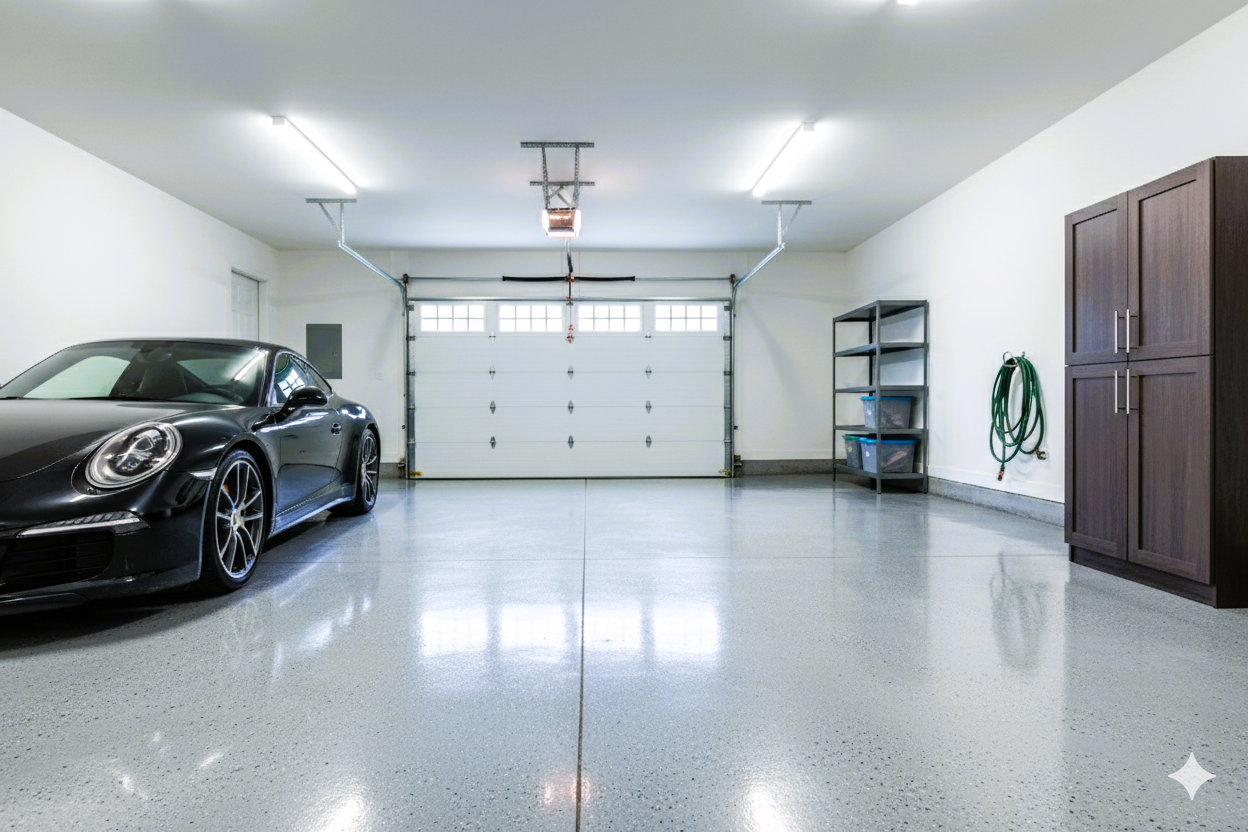Emerging Trends in Commercial Concrete Design
Emerging trends to watch for in commercial concrete design

Innovation is propelling the future of commercial concrete. Notably, the use of self-compacting concrete for seamless surfaces and 3D Printing for intricate designs are not just trends but practical solutions. These advancements lead to more sustainable and visually appealing designs, with buildings now being constructed with a material that is both tough and environmentally friendly, meeting all modern interior design standards.
1. Eco-Friendly Material Advancements
Cement With Lower Carbon Footprints And Recycled Aggregates
Among the key themes in design projects today is sustainability. Concrete making has witnessed incredible innovations aimed at reducing carbon emissions into the atmosphere. For instance, manufacturers can use cement that does not harm ecosystems or build other structures that consume less power, besides recycling glass or ceramics as components for creating unique appearances on constructions. These practices, while meeting modern interior design standards, also contribute significantly to the preservation of our environment, offering a beacon of hope in our crucial mission.
Biodegradable Plant Substitutes
The future of concrete goes beyond traditional materials. In recent times, there has been an emergence of plant-based concrete, where plants and other organic ingredients are used to bind everything together. This innovative process involves extracting cellulose from plants and using it as a binder, resulting in a concrete that is not only biodegradable but also durable. This means that buildings may decompose naturally when no longer needed, which is quite interesting if you think about it because, until now, the only thing about this substance was its indestructibility.
2. Creative Recycling Techniques
Ways To Use Old Concrete Again
Concrete waste, widely used as a building material from ancient times to today, is produced in large quantities. The latest trend is to recycle this waste on-site by crushing it into small pieces, which can then be used as foundations in new constructions or mixed into fresh cement mixtures for various uses, such as plastering walls. This approach cuts down on environmental impact and costs associated with material disposal and procurement, promoting sustainable development through better resource use.
Reducing Landfills And Conserving Resources
The landfill overflow issue has led to innovative concrete design processes that divert waste from landfills, pushing us towards a circular economy. This approach aims to minimize waste and emissions with products designed for reuse, repair, or recycling, reducing the environmental impact and promoting sustainability. Additionally, it conserves resources that would otherwise be used to manufacture new components, as we're reusing the same materials, thus reducing the environmental footprint of the industries involved.
3. Certifications for Environmental Performance
Benefits and importance of green certifications
Green certifications like LEED and BREEAM play a pivotal role in driving the adoption of sustainable practices in the concrete industry. They underscore the use of eco-friendly materials and methods in construction, benefiting the environment, economy, and health. These certifications are not just ideal for concrete projects but also for energy efficiency, waste reduction, and promoting healthy indoor environments. They not only give businesses a competitive edge but also align them with global sustainability efforts.
Compliance with Industry Incentives
There are an increasing number of reasons why companies should follow ecological guidelines. Tax credits, expedited permitting, and zoning are some tangible benefits of doing business within ecological frameworks. As a result of this culture shift towards recognizing sustainability as part of basic operational requirements, many more certifications have been introduced, reflecting different sectors' commitment to sustainable development within their activities.
4. What's In Style For Commercial Concrete Now?
Revolutionary Blends & Composites
Self-compacting concrete (SCC) is an important development that eliminates the use of vibrators by flowing into the formworks. This saves time and enhances the appearance of the finished surface.
Customization with 3D Printing
3D printing technology has revolutionized construction, offering unprecedented customization and design freedom. Previously impossible complex shapes are now achievable with concrete printers, opening up new avenues for innovative architecture. This is a glimpse into the future of concrete design, where innovation and creativity are limitless.
From facades to furniture, 3D Concrete Printing enables intricate, personalized designs, heralding a new era in custom construction where every detail can be customized to the client's desires.
Smart Concrete Technologies
Concrete combined with technology has given rise to 'smart' concrete, a material that can self-monitor its structural health and environment. This innovative material detects its condition and provides instant feedback, enabling maintenance teams to address issues early. Smart concrete finds applications in various sectors, including electric car-charging pavements and bridges that detect strain or stress. These advancements significantly enhance infrastructure resilience, marking a new era in concrete technology.
5. Emerging Trends in Aesthetics and Functionality
Textured Finishes and Colored Concrete
The demand for visually appealing concrete surfaces is on the rise, with designers offering textured finishes and colored options. These textures, achieved by incorporating aggregates like crushed stone or glass, enhance both aesthetic appeal and durability, mimicking natural substances for a tactile experience. Additionally, pigmented cement allows for a range of colors, from earth tones to vibrant hues, offering creative possibilities for various design schemes. This technique maintains the durability and cost-effectiveness of regular cement, making it a popular choice for both interior and exterior use.
Self-Healing Concrete
Self-healing materials that repair without external help mark a breakthrough in concrete technology. These materials autonomously fill micro-cracks, extending building lifespans and cutting maintenance costs. They're especially useful in critical structures like bridges or tunnels under high stress. This innovative concrete design saves costs and supports sustainability by reducing waste.
6. Global Trends in the Market for Commercial Concrete
Shifts in the Supply Chain Dynamics
Global trends in supply chain dynamics are shifting the commercial concrete market towards localization and vertical integration. This shift is driven by organizations' search for sustainable and secure supply sources, marked by more recycling and the rise of local suppliers. Vertical integration means companies are taking control of various production stages to ensure sustainability and quality, and to reduce reliance on external contractors. These changes reflect broader efforts to become more resilient.
Regional Developments and Trends
Concrete designs vary globally due to differences in weather, building regulations, and cultural practices. For example, cold climates use thermal bridging for insulation, while hot regions require materials resistant to high temperatures and UV rays. Rapidly urbanizing areas focus on concrete for tall buildings and infrastructure, while less populated regions are turning towards environmentally friendly design applications in agriculture.
Conclusion
Current concrete solutions prioritize sustainability, incorporating design to reflect a shift towards ecological responsibility and aesthetic appeal. Your role in staying informed on the latest in commercial concrete design allows you to craft eco-friendly, attractive spaces. Engaging with innovative concrete experts is key to understanding modern, durable construction techniques and materials. As a result, tomorrow's commercial concrete designs, guided by your knowledge and expertise, are set to make our world cleaner and more resilient.
At Grand Rapids Concrete Pros, we recognize the uniqueness of each project. We offer tailored concrete solutions to meet our clients' specific needs, blending cutting-edge design with advanced technology for durable, stylish, and sustainable results. Choosing Grand Rapids Concrete Pros means opting for a mix of creativity, style, and environmental consciousness for your next project.
Contact us now!





